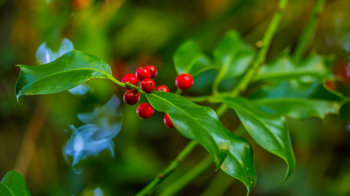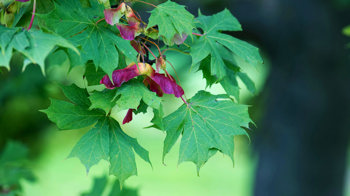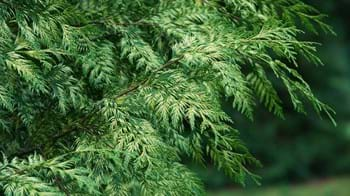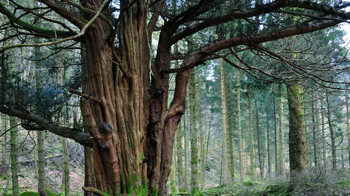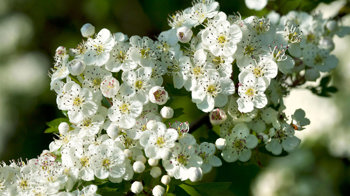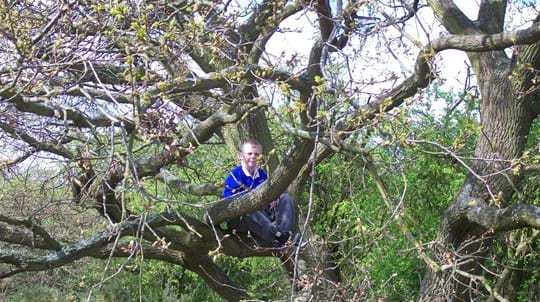
Joyden's Wood
Dartford & Bexley South

Woodland Trust wood
134.81 ha (333.12 acres)
TQ501717
Explorer 162
OS Landranger 177
Joyden’s Wood is a tranquil, ancient woodland right on London’s doorstep. With its remarkable flora, abundant wildlife, and an intriguing history stretching back to Roman times, it’s a wonderful place to escape the hectic pace of city life.
Features
- Parking nearby
- Public access
- Spring flowers
- Waymarked walk
How to get to Joyden's Wood
The 135-hectare (333-acre) Joyden’s Wood is located on the south-eastern edge of Greater London, only 21km (13 miles) from the city centre and within walking distance of Bexley High Street. The wood is split into three areas: Joyden’s Wood is the largest block at 127 hectares (314 acres); Gattons Plantation (14 hectares) is to the west of this and the more isolated Sands Spinney (1.4 hectares) lies to the north.
From Bexley, head south-west on Manor Road towards N Cray Road/A223, then turn left onto the A223 (Bexley High Street). At the roundabout, take the first exit onto the A2018 (Vicarage Road). Turn right into Baldwyn’s Park and then left into Tile Kiln Lane. Take the second right onto Summerhouse Drive.
From the M25, leave at junction 2, following the A2 west towards London then take the first exit for the A2018 towards Bexley. Immediately at the next roundabout, turn left into Oakfield Lane. After 0.4km (0.25 miles) turn right into Leyton Cross Road which becomes Birchwood Road. After 1.9km (1.2 miles) turn right into Summerhouse Drive.
The main entrance track can be difficult to spot. It is on Summerhouse Drive, next to the Squires Way bus stop.
The nearest railway station is Bexley, on the Dartford to Charing Cross line. The station is 1.6km (1 mile) from the north-west entrance into the wood.
Visit National Rail for more information.
Buses run from Swanley, Dartford and Bexley, with stops close to the Ferndell Avenue and Summerhouse Drive entrances to the wood.
Visit Traveline for more information.
Facilities and access
There are two main pedestrian entrances: one off Summerhouse Drive and another at the end of Ferndell Avenue. Only the Summerhouse Drive entrance is accessible to wheelchairs and pushchairs, having a wide kissing gate leading to a surfaced stone track.
The main entrance to Gattons Plantation is from the west side, off Cocksure Lane. There is no public access provision in Sands Spinney.
Three entrances for horse riders lead to a network of permissive bridleways around the west side of the wood. These bridleways are fenced off from the rest of the site. Riders must purchase a permit and key from Mount Mascal stables.
The woodland has a good network of paths and tracks, and two circular waymarked routes: the Faesten Dic Trail (3.3km/2 miles) and the Woodland Walk (2.7km/1.7 miles). Gattons Plantation has one circular path. There is no car access to Gattons Plantation, but it can be accessed by foot via Parsonage Lane from the south gate of Joyden’s Wood, next to Chalk Woods.
There is no car park at the wood. Limited street parking is available along Summerhouse Drive, close to the main entrance. There is also a pay and display car park on Bexley High Street and parking at Bexley train station which is within walking distance of the wood.
The nearest toilets are at Summerhouse Drive Library during opening hours (Tuesday and Thursday from 9am-1pm and 2pm-6pm, Friday 2pm-6pm, and Saturday 10am-2pm).
There are also facilities around 6.4km (4 miles) away in Dartford town centre. The closest is on Market Street, near the library, where there are disabled facilities which can be accessed via a RADAR key.
Wildlife and habitats
Animals
Joyden’s Wood is a paradise for local wildlife. The oak, sweet chestnut and beech are alive with many species of bird and you may catch sight of a buzzard, sparrowhawk or kestrel soaring on the thermals high overhead. The ponds are home to all three native newt species and the heath area is alive with butterflies in the summer.
Trees, plants and fungi
In spring, the woodland floor is a patchwork of vibrant bluebell, sunny yellow celandine and delicately fragranced lily of the valley, and in summer the small heath on high ground at the centre of the wood is a great place to picnic and enjoy the views across the city.
Autumn brings an explosion of colour as the leaves turn to gold, russet and crimson, and all kinds of imaginatively-named fungi burst out of deadwood and woodland floor. Look out for the purple tones of the amethyst deceiver and lilac bonnet, and the white-spotted red cap of the iconic fly agaric. And in winter the conifers provide a welcome splash of greenery.
Habitats
The varied habitats at Joyden's Wood come together to make a haven for wildlife.
History of Joyden's Wood
In several areas of the wood, you can see remains of the mile-long Faesten Dic (Saxon for Strong Dyke), a defensive structure possibly built around AD 457 by the Saxons to help keep out the Romano-British Londoners. Originally a V-shaped ditch, up to eight metres (26 feet) wide, it has become partially infilled over the years.
Look out for the medieval woodbanks which were used to mark boundaries, usually of farmed land. Spot the small depressions in the ground which indicate filled in ‘deneholes’, underground excavations for chalk used in agriculture. The other medieval features in the wood are the remains of King’s Hollow, thought to have once been a dwelling, and Hadlow Well, a large hollow.

Credit: Edward Parker / WTML
Second World War
The Second World War also left its mark on the woods. There’s a line of bomb craters in the wood, probably from a fighter plane jettisoning its bombs on its return from London attacks. Two Hawker Hurricane fighter planes were also shot down in the wood during the war. Keep an eye out for the wooden sculpture of a crashed Hurricane carved by local sculptor, Peter Leadbeater.
Acquisition
For many years, the wood was part of a large estate, but this began to be broken up and sold from the mid-1950s. The Forestry Commission took over Joyden’s Wood in 1956 and cleared much of the native woodland vegetation. The site was then planted with mainly Corsican pine, Scots pine and broadleaves such as beech and red oak.
We purchased Joyden’s Wood, Gattons Plantation and Sands Spinney from the Forestry Commission in 1987, and in 1993 Dartford Borough Council gave us the north-eastern corner of Joyden’s Wood.
We have been working to thin the conifers to allow more light to penetrate to the woodland floor. This will enable the remnant native flora to regenerate and create a more diverse habitat for wildlife.

A lasting legacy
This wood is just one of many to have been protected by gifts in wills, securing it for generations to come. Your legacy gift could also make a real difference to woods, trees and wildlife.
Learn what your gift could meanThings to do in Joyden's Wood
Walks
A tranquil and ancient woodland right on London's doorstep. Explore and have your own adventure in this wonderful place to escape to.

Visiting woods
Walking dogs in our woods
Dogs are welcome for walkies in our woods. Take a look at our tips and guidelines for ensuring we keep our woods safe and special for dogs and wildlife.
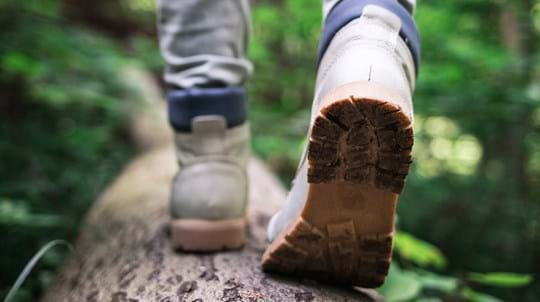
Take an audio tour of this wood
Listen to our Woodland Walks podcast series with host Adam Shaw and special guests.
External link

Visiting woods
Events
Discover events at our woods and the festivals and fairs you can find us at soon.










































